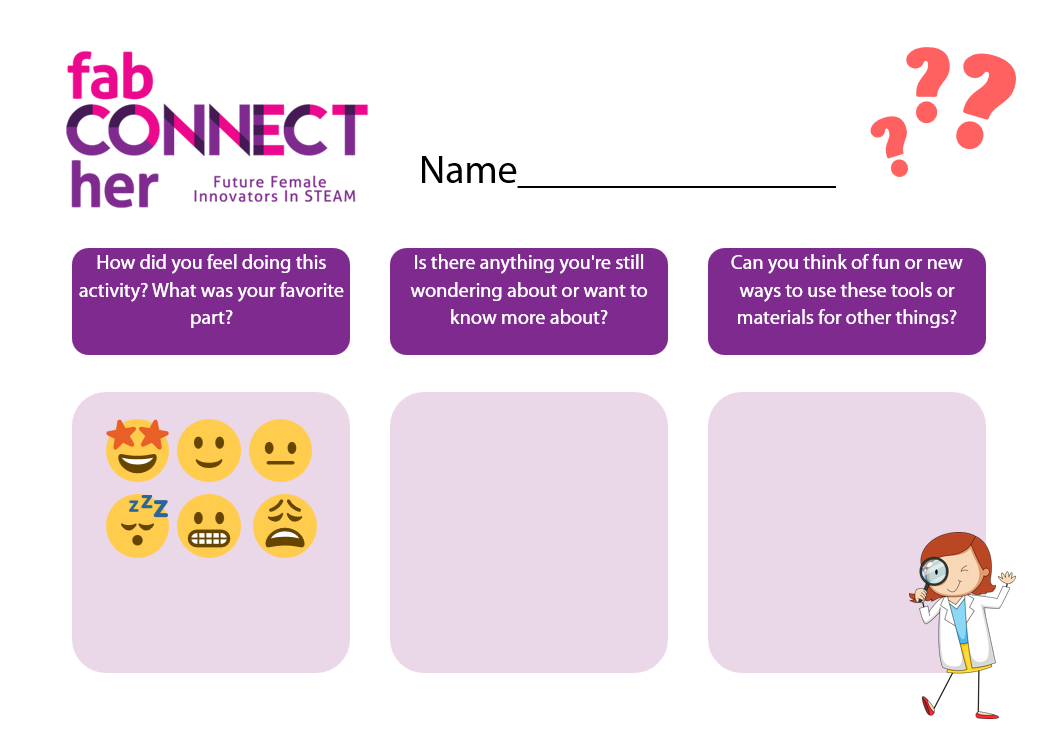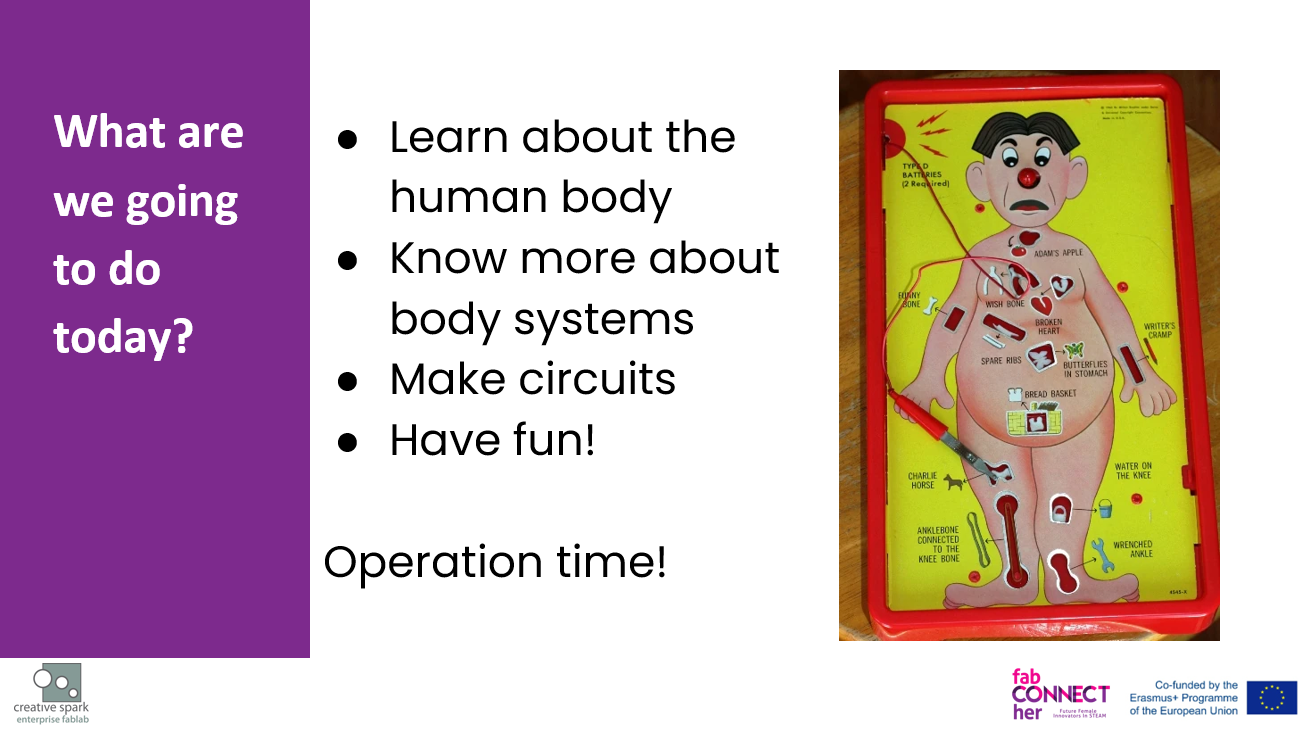This activity is part of the FabConnectHer project, dedicated to empowering future female innovators by providing inspiration, skills, and networks to make a meaningful impact in STEAM (Science, Technology, Engineering, Arts, and Math) through education, reemployment, or entrepreneurship. Designed as an Open Educational Resource (OER), it offers educators the flexibility to reuse, adapt, and tailor the lesson to a variety of subjects and classroom needs, ensuring accessibility and versatility for diverse learning environments.
“Taking care of myself” presents an interactive way for young learners to discover the importance of self-care by learning about the human body parts, systems, conditions and diversity. The participants will explore human body parts, systems, conditions and how they work together by making a simple circuit representing the human body and its connections.
For one circuit body per participant:
For the session activity:
By the end of this lesson, students will be able to:
· Develop self-awareness and self-esteem by understanding their own bodies and the importance of self-care.
· Encourage empathy and inclusivity by recognizing and respecting body diversity, different health conditions, and assistive technologies.
· Explore human anatomy and body systems by identifying and discussing how different parts and systems function together.
· Understand basic electronic circuits and their connection to the human body as a system of energy and information transfer.
· Enhance fine motor skills by assembling circuits, handling conductive tape, and positioning small components.
· Foster creativity and personal expression in the design of the project while making connections between science, technology, and art.
· Practice problem-solving and persistence by troubleshooting circuit connections and refining their designs.
B&T dimensions and types covered
Dimensions:
Types:
Reflections: Discuss what students have learned about body systems, electrical circuits and diversity. Emphasize that all bodies are unique and valuable.
Lesson Assessment: Run the lesson assessment sheet to the students to write down their findings and thoughts.

Introduce the participants to STEAM and to the human body, highlighting diversity in body types, organs, and their functions. Emphasize the uniqueness and value of all bodies.
To onboard the lesson participants to the activity, you can use the following questions and also reference the Operation Time board game as an example of what the activitiy is about.
Trigger Questions:

Play the Activity #1 “Guess the body part” game, students need to guess the body part using the hints in the other columns of the table.
Using the Worksheet 1 information, ask the students to guess the body part using the information on the other columns.
You can do this in group by randomly asking them about how much they know
Make a quick reflection with the students about the body part and the links with the good habits, careers and food to improve the functions.
Questions around the human body:
In this next activity, students will discover more about the body systems, organs and their location in the body.
Play the Activity #2 “Exploring body systems and conditions”, students’ needs to
Ask about diversity in human bodies, brainstorm and discuss different body systems and conditions, emphasising diversity and inclusivity.
Discuss with the participants about human bodies diversity, Does they know anyone in their family or friends with:
Play the Activity #3 - “Our body is a circuit”, students will be introduced to the electrical circuit basic concepts (energy source, light, and conductor or wire).
Start by asking the following questions:
Hand over the students a battery and a LED to test a simple circuit.
Students will make an electrical circuit using a LED, battery and conductive tape.